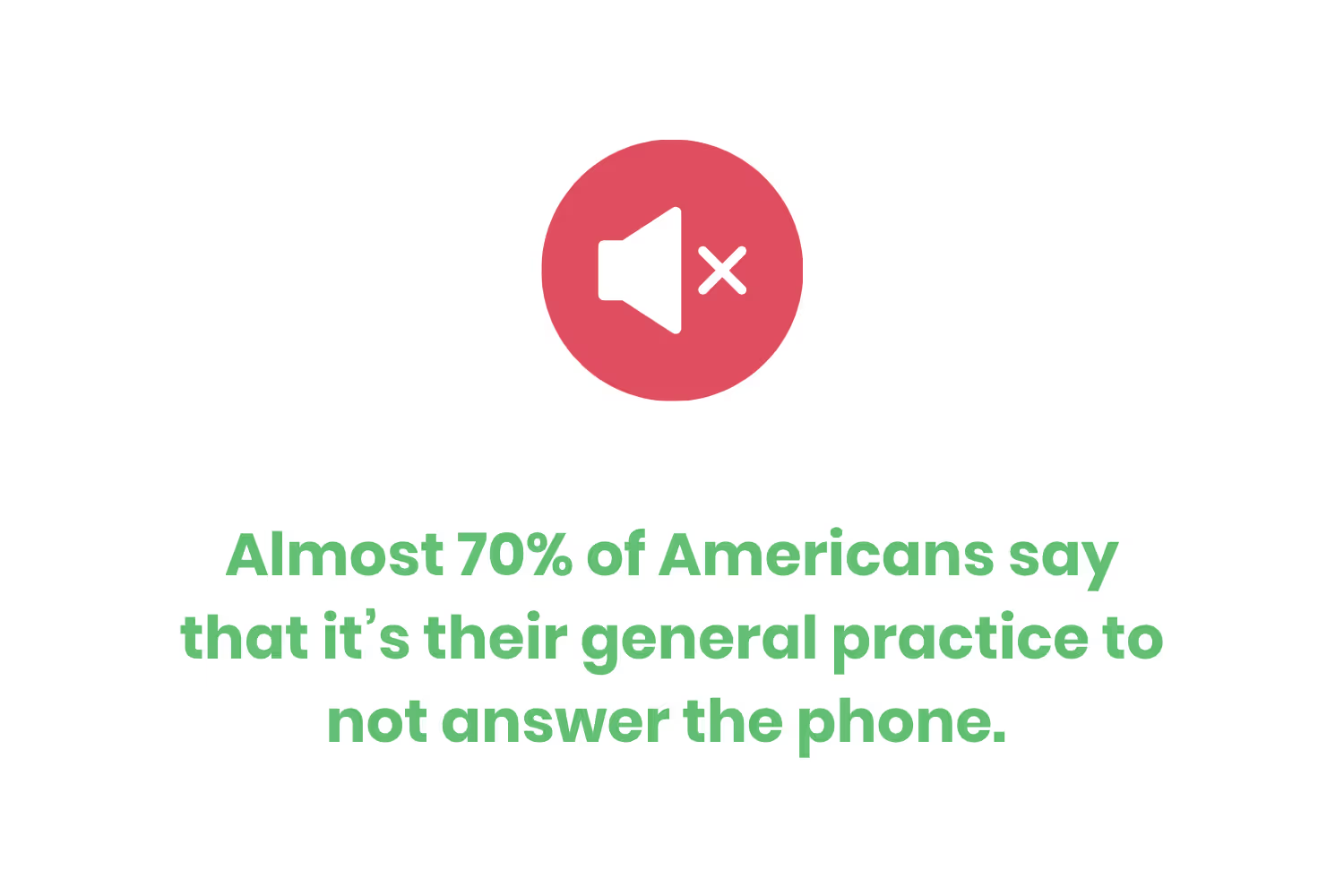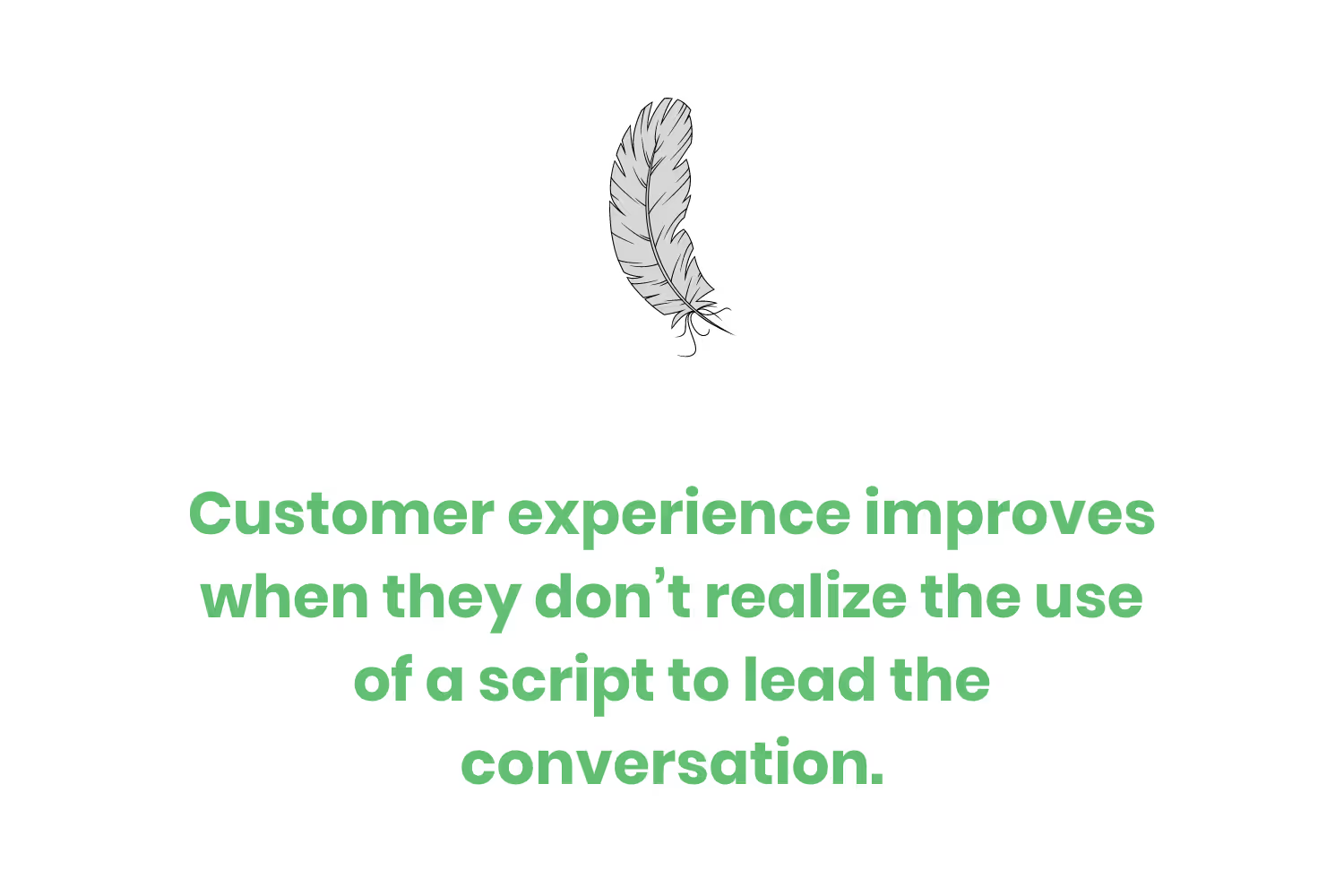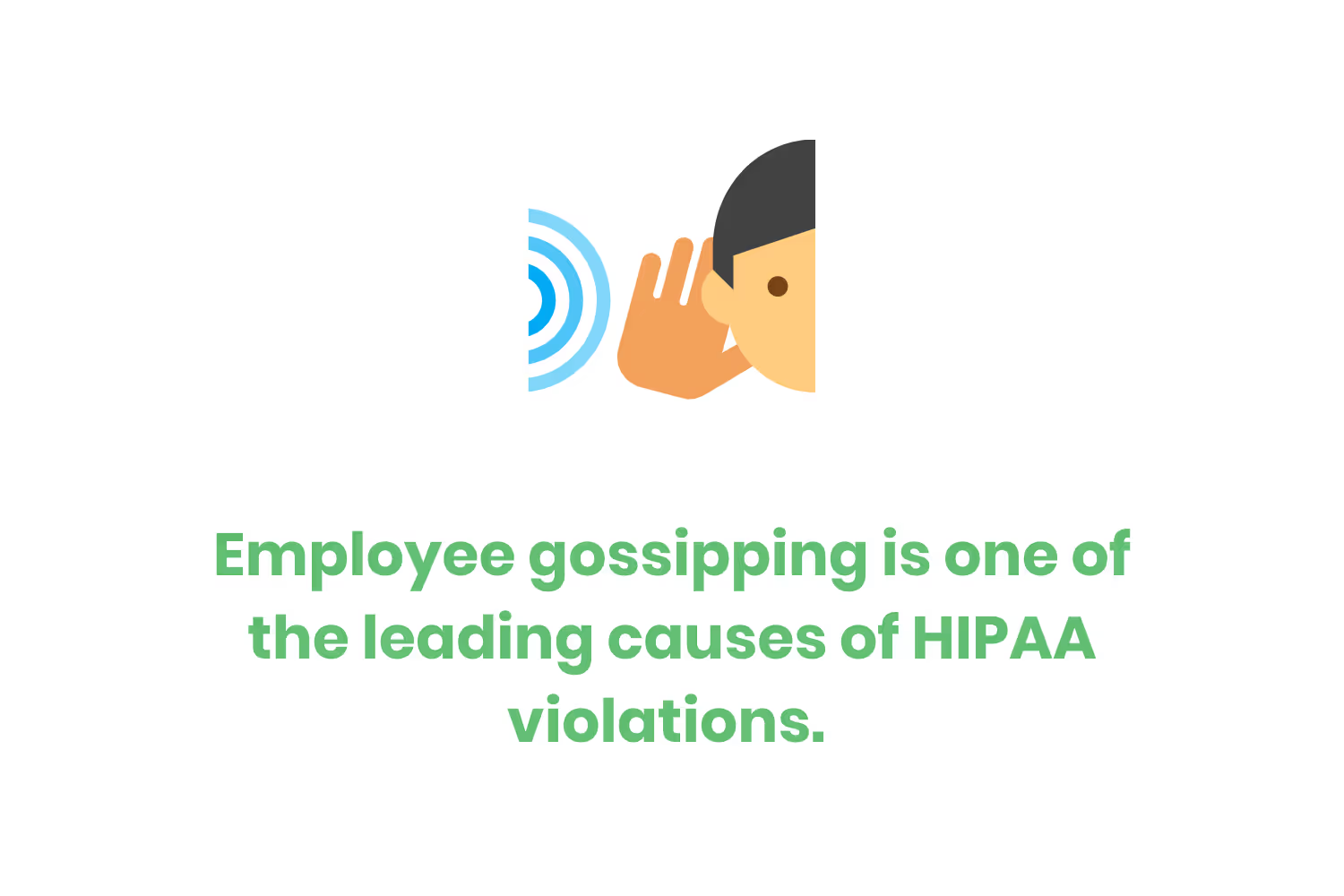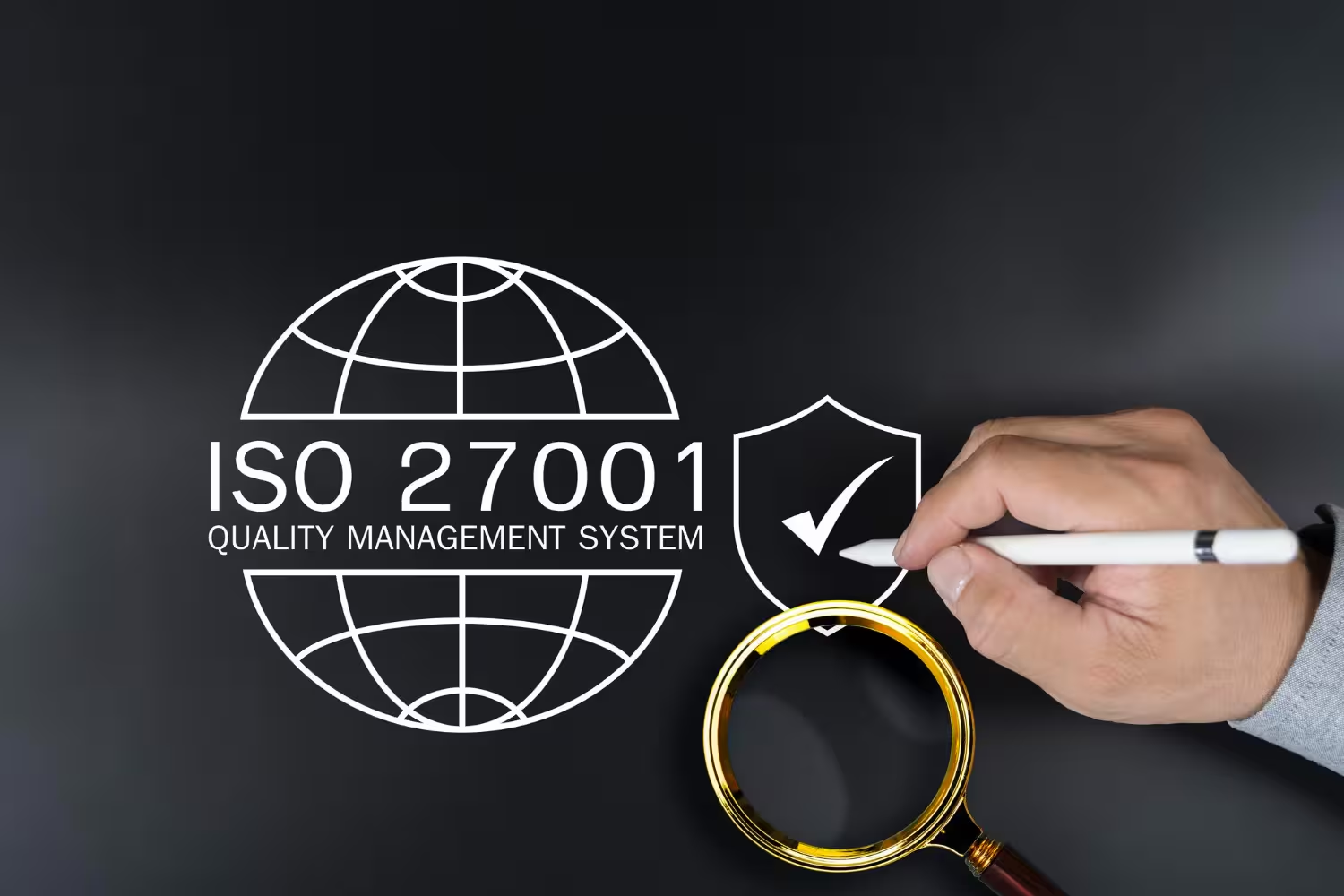How to Leave a HIPAA Compliant Voicemail (5 Examples Included)
Almost 70% of Americans say that it’s their general practice to not answer the phone. At some point or another, you’re going to have no choice but to leave a voicemail for your clients. Here’s how to do it in a HIPAA compliant way.

Patients actively want to participate in their health. As a result, communicating back and forth with them is super easy since they prioritize their doctor.
The above statement is completely false, although it does sound nice.
If you’re a healthcare professional, you know that sometimes patients aren’t the easiest people to contact. You would think that they’d have a sense of urgency when it comes to staying in contact, but sometimes they just don’t have time or they’re stubborn (depending on their generation).
It’s your responsibility to keep them up-to-date on everything related to their health. This is especially true after they’ve had an appointment with you. But this isn’t easy.
The reality is that almost 70% of Americans say that it’s their general practice to not answer the phone. Maybe that statistic isn’t that much of a surprise to you considering all of the modern-day communication alternatives that exist. Yet, AT&T found that the number of cellular calls rose by 35% in 2020.

What I’m trying to allude to is that, at some point or another, you’re going to have no choice but to leave a voicemail for your clients.
That might not sound like that big of a deal. After all, people have left voicemails for each other since the original machine came 1960s. But what you say in your recorded message could lead to massive consequences according to the Health Insurance Portability and Accountability Act (HIPAA).
If you found this blog post, though, odds are that you already knew this. On top of everything else on your daily to-do list, you also have to have a process in place for sending a voicemail to your patients. Have no fear, you’ve come to the right place.
Know What's Allowed
It isn’t reasonable to prohibit healthcare providers and other covered entities from using voicemail altogether. If that were the case, it would severely impact the ability of the entire industry to adapt to technological advancements in general. Trends like telehealth also wouldn’t exist.
According to the Department of Health and Human Services (HHS), you may leave a voice message for your patients.

The screenshot above comes straight from a FAQ section of their website. Surprisingly, the HHA provides a clear-cut “yes” with another affirmation at the end of the paragraph regarding leaving messages for patients on their answering machines.
However, that doesn’t mean that doctors can call up their clients and blabber on about every little detail about their upcoming or previous appointment.

The second screenshot above is from the same source as the first. The portion goes on to explain that covered entities should ensure that they limit the amount of information that they disclose in a voicemail. The HHS even provides a theoretical example of a covered entity only sharing its name, number and appointment confirmation details.
If you haven’t noticed by the way I wrote this section, the thoroughness of the HHS’ answer in this FAQ surprised me. Yet, there’s still more you should know regarding how to leave a voicemail message that’s engaging and helpful for your patients.
Create a Script
The majority of business that occurs over the phone uses a script.
Chances are you’ve had to call into a customer support line at some point in your life.
After you navigated through the organization’s automated system and had to wait on hold, you finally got to a human on the line. As soon as you get through to them they say something about their organization, who they are, and then ask you a series of questions. After you tell them about the problem you’re experiencing they say something along the lines of, “I’m sorry to hear that, let me see what I can do for you.” After they’ve fixed your issue, they give you another spiel about a feedback survey and thank you for calling.
I’d also wager to bet that you’ve been on the receiving end of a telemarketer’s unsolicited phone call. Those calls always come at the wrong time. Yet, no matter how many times you say you’re not interested, the representative on the phone has another value-add that’s supposed to make it harder for you to refuse what they’re selling you.
My point of refreshing your memory about everyday occurrences we all have with different types of organizations is to illustrate the fact that they’re all scripted.
If the two organizations that the employees represent constructed their scripts well, though, you wouldn’t have noticed. After all, a 2018 study found that customer experience improves when they don’t realize the use of a script to lead the conversation.

Nevertheless, they help guide the conversation and ensure to gather certain information with every interaction. Why not use a similar concept to ensure you’re leaving HIPAA-compliant voicemails?
I hinted at this takeaway in the previous section where I broke down the HHS’ official answer to whether or not you could leave your patients voicemails. They gave a very useful and direct answer that even included the foundations for an effective script.
To reiterate, it stated that a covered entity may only list its name, number, minor details about the appointment and ask for their client to call back.
This isn’t a full-blown script, but you could use it as the basis for a template.
I also want to point out that the script they’re giving isn’t a requirement, you’re allowed some leeway for some personal touches. For example, you might want to instill a sense of community in your organization. As such, maybe you include a section in your voicemail script about what’s happening at your practice (such as announcing a new doctor).
Script 1: Vague and Brief
Of course, this blog post wouldn’t be as valuable to you if I didn’t provide example HIPAA compliant voicemail scripts.
This first example is the most common type of voicemail you’ll end up leaving your patients. It works in place of all of the other scenarios after this one, but it’s vague.
Hello [Name of Patient]. This is [Name] from [Practice]. I was trying to reach you, but it looks like you are not available at the moment. If you could give me a call this afternoon at [Phone Number] that would be great. Thank you.
You don’t need to provide any other pieces of information on your patient’s messaging system. All you need to include in your title, name and details about your attempt to reach them.
Although it’s vague, it doesn’t leave any room for an unintentional HIPAA violation. It works on the notion that if your patient received a voicemail from their doctor, it must be important.
Script 2: In Case of Specialty
Although going the vague route is safest, it doesn’t work for every type of medical doctor.
You see, sometimes patients have more than one doctor. Maybe they see a general practitioner for a yearly physical, but also have a rheumatologist for arthritis.
If you’re a specialist doctor, you’ll likely want to allude to your patients that you’re calling them regarding a specific type of service that you offer.
There’s a big problem with that, though. If you’re a rheumatologist and you mention that fact in the voicemails you leave, it’s arguably a HIPAA violation.
According to rheumatology.org, these specialty physicians help patients who have “systemic autoimmune diseases”. All of those diseases cause inflammation of the joints and/or arthritis. Thus, if you leave a voicemail for a patient that mentions your specialty and someone else listens to it, the listener will know that the patient has a problem with their joints.
Hello [Name of Patient]. This is [Name] from [Practice]. I was trying to reach you, but it looks like you are not available at the moment. If you could give me a call this afternoon at [Phone Number] that would be great. Thank you.
So what’s the solution to leaving a HIPAA compliant voicemail if you’re a specialty doctor? Mention that you’re their specialist and leave it at that. Don’t get into specifics.
Script 3: Regarding Perscription
Whether you need to provide updates regarding patient prescription orders as a pharmacist or you need to give prescription instructions as a provider, phone calls need to happen. If there are phone calls, there will be voicemails.
Leaving voicemails related to medication also opens up the door to even more HIPAA violation vulnerabilities.
The golden standard of vagueness applies in this instance as well.
[Name of Patient]. [Name] here, giving you a follow-up call regarding your new prescription. Call me back when you can.
Don’t provide any specific data points in your voicemail. Especially don’t include the prescription number and the medication name. Leave the specifics for when the patient calls you back to have a conversation.
You don’t want someone else hearing or overhearing the voicemail and finding out about a prescription that your patient needs.
Script 4: Appointment Reminder
One of the biggest disappointments that happen in the healthcare world is patient no-shows. They have an effect on your organization’s bottom line, but they’re also kind of a bummer in general.
Forgetfulness is the leading reason patients don’t show up to their medical appointments. In order to help your patients recall their upcoming appointment with you, you should send them periodic reminders.
Providing appointment reminders is the tried and true way to keep your patients in the know.
Hi [Name of Patient]. I’m just calling to remind you of your upcoming appointment with [Name] tomorrow. Please bring your insurance card when you stop by.
The only thing that differentiates this HIPAA compliant voicemail script from others is that it mentions the word “appointment”. Like the examples before this one, you can say that they have an appointment with you in your message. Just don’t say what their scheduled visit is for.
Script 5: Billing Reminder
Unfortunately, no-shows aren’t the only “bummer” that healthcare organizations deal with. There’s also a more sensitive subject, billing. You see, running into patients who can’t pay for their medical bills is another unfortunate inevitability.
But you can’t assume that every patient that has an outstanding balance with you can’t afford what they owe. Going that route has massive repercussions on your bottom line.
Instead, give those patients who have upcoming payments that are due a call.
Hello [Name of Patient] this is [Name]. I’m giving you a call to remind you that your account has an outstanding balance with us and it’s almost due. You can pay over the phone, give me a call back when you’re available.
By the time you’ve reached this fifth example, you know the upcoming words of caution. Don’t include any detail about the billed service. Simply explain that they have an upcoming and/or overdue payment on their account.
Show Emotion and Be Genuine
A study from Additional Gold Foundation found that when doctors show empathy toward their patients it improves health outcomes.
Yet, a separate study confirmed that physicians become less empathetic the longer they work in the industry that they serve.
I put those two studies together to emphasize the point of this section, not say that you’re “heartless” if you happen to be a doctor. This section exists to explain the importance of showing empathy and being genuine in the voicemails you leave for your patients.
Yes, having a script ready just in case your client doesn’t answer their phone is something you should have. Yet, you don’t want to come off as inauthentic. According to the 2020 National Customer Rage Study, one of the primary factors in rage-inducing customer experiences occurs when clients deal with poorly written scripts that come off as phony.

Of course, you’ll have to hold a certain sense of professionalism. You already know that, though.
What you probably don’t know is the findings from Daniel M. Oppenheimer. He found that using long, academic-sounding words instead of their more simple alternatives has inverse effects than their intention. This scenario actually makes people think you’re less intelligent.
Obviously, this is a little bit different in your case. You’re a doctor, patients come to you for treatment and to explain what’s wrong with them. However, since you can’t overshare information in voicemails you leave anyway, there’s no harm in being your genuine self.
Conduct Calls in a Private Room
Beyond the information you’re giving in your voice messages, you also have to stay aware of your surroundings.
Employee gossipping is one of the leading causes of HIPAA violations. Thus, oversharing on a voicemail could lead to two different types of breaches.
So far, I’ve only touched on the first scenario. You leave a message that includes overly personal information and someone else listens to it.

Let’s say you left that compromising voicemail message in earshot of other members of your workforce. They then take the information you discussed and share it with other employees and/or their families over dinner. That’s a separate type of HIPAA violation, yet it occurred at the same time as the original scenario.
As you can see, this could get out of hand rather quickly.
The point I’m trying to make is that you need to keep location in the top frame of mind when you’re getting ready to call your clients.
Even if you’re not the person who calls your clients regarding their upcoming appointment, the risk involved has an immediate impact on your organization. As a result, designate an area where for phone calls in order to keep eavesdropping to a minimum.
You don’t want to have to deal with an audit from the HHS because of a HIPAA violation related to a voicemail. Learning that another patient overheard the message because your employees conducted a phone call in your waiting room would only make matters worse.
Conclusion
After reading this blog post you not only know that you may leave a voicemail message for your patients but also how you should go about doing it.
As I’m sure you know, nothing in healthcare is as simple as it sounds. If you were in any other industry, you could just call your client and tell them everything they need to know in the message.
In your industry, though, you and your employees have to constantly stay aware of any information disclosures due to HIPAA.
Yet, just because it isn’t as simple in your industry doesn’t mean it has to be difficult. A script, genuine tone and a designated room are all you need to when leaving HIPAA compliant voicemails.
Emphasize your product's unique features or benefits to differentiate it from competitors
In nec dictum adipiscing pharetra enim etiam scelerisque dolor purus ipsum egestas cursus vulputate arcu egestas ut eu sed mollis consectetur mattis pharetra curabitur et maecenas in mattis fames consectetur ipsum quis risus mauris aliquam ornare nisl purus at ipsum nulla accumsan consectetur vestibulum suspendisse aliquam condimentum scelerisque lacinia pellentesque vestibulum condimentum turpis ligula pharetra dictum sapien facilisis sapien at sagittis et cursus congue.
- Pharetra curabitur et maecenas in mattis fames consectetur ipsum quis risus.
- Justo urna nisi auctor consequat consectetur dolor lectus blandit.
- Eget egestas volutpat lacinia vestibulum vitae mattis hendrerit.
- Ornare elit odio tellus orci bibendum dictum id sem congue enim amet diam.
Incorporate statistics or specific numbers to highlight the effectiveness or popularity of your offering
Convallis pellentesque ullamcorper sapien sed tristique fermentum proin amet quam tincidunt feugiat vitae neque quisque odio ut pellentesque ac mauris eget lectus. Pretium arcu turpis lacus sapien sit at eu sapien duis magna nunc nibh nam non ut nibh ultrices ultrices elementum egestas enim nisl sed cursus pellentesque sit dignissim enim euismod sit et convallis sed pelis viverra quam at nisl sit pharetra enim nisl nec vestibulum posuere in volutpat sed blandit neque risus.

Use time-sensitive language to encourage immediate action, such as "Limited Time Offer
Feugiat vitae neque quisque odio ut pellentesque ac mauris eget lectus. Pretium arcu turpis lacus sapien sit at eu sapien duis magna nunc nibh nam non ut nibh ultrices ultrices elementum egestas enim nisl sed cursus pellentesque sit dignissim enim euismod sit et convallis sed pelis viverra quam at nisl sit pharetra enim nisl nec vestibulum posuere in volutpat sed blandit neque risus.
- Pharetra curabitur et maecenas in mattis fames consectetur ipsum quis risus.
- Justo urna nisi auctor consequat consectetur dolor lectus blandit.
- Eget egestas volutpat lacinia vestibulum vitae mattis hendrerit.
- Ornare elit odio tellus orci bibendum dictum id sem congue enim amet diam.
Address customer pain points directly by showing how your product solves their problems
Feugiat vitae neque quisque odio ut pellentesque ac mauris eget lectus. Pretium arcu turpis lacus sapien sit at eu sapien duis magna nunc nibh nam non ut nibh ultrices ultrices elementum egestas enim nisl sed cursus pellentesque sit dignissim enim euismod sit et convallis sed pelis viverra quam at nisl sit pharetra enim nisl nec vestibulum posuere in volutpat sed blandit neque risus.
Vel etiam vel amet aenean eget in habitasse nunc duis tellus sem turpis risus aliquam ac volutpat tellus eu faucibus ullamcorper.
Tailor titles to your ideal customer segment using phrases like "Designed for Busy Professionals
Sed pretium id nibh id sit felis vitae volutpat volutpat adipiscing at sodales neque lectus mi phasellus commodo at elit suspendisse ornare faucibus lectus purus viverra in nec aliquet commodo et sed sed nisi tempor mi pellentesque arcu viverra pretium duis enim vulputate dignissim etiam ultrices vitae neque urna proin nibh diam turpis augue lacus.




